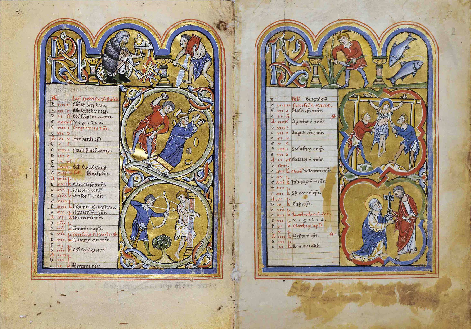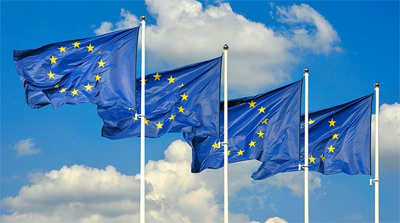European values
It must be stressed that, in the concept of creating the Route, the attribution of a value does not concern only a determined territorial environment where that value matured or appeared. The first root of European Culture that we are talking about here was formed through a complex evolution that passes through all the locations on the European Route and therefore characterizes all the Clusters in the system.
The conceptual and organizational identification of the Route and of each single Cluster considers and is based on three kinds of fundamental Values, such as to define the individual and non-reproduceable identity of each Cluster, thus allowing the attribution of Added Value not only to proposals for tourism, but also to products and services in the territory that may be of interest for tourism (farm food products, wines and gastronomy, handicrafts, services, etc.). These Values can be defined as:
- HISTORIC AND CULTURAL
- NATURAL
- ETHICAL
An other Value is attributable to the phenomenon (early medieval and modern) of the migration-integration.
Historical values
1) Historic and culturale Values
In the general context of the Route each Cluster has its own story to tell of what happened after the Longobard experience. In the logic of the Route, this represents not only a further enrichment of the total offer, but also an opportunity for further knowledge, which allows higher levels of interaction among the different Peoples of Europe, who share the same Longobard historical experience and the experience of travelling in the Longobard system.
2) Natural Values
The Route has the task of favouring the reconstruction of the early mediaeval territorial environments of the individual clusters, using various means and innovative technologies.
From the point of view of tourism, it should be considered that some of today's territories present characteristics of environmental integrity which - if not comparable to those of the Longobard period - are nevertheless a strong attraction for an influx of eco-sustainable and eco-compatible tourism.
For this reason, the tourism offer of each Cluster also includes natural areas - both spontaneous and protected - in which the qualities of biodiversity and geodiversity can be distinguished.
This action of integrated promotion fulfils the task of strengthening the attention to and care of the environmental heritage, favouring a primary reflection on the equilibrium to be sought and preserved in the relationship between Man and Nature, which characterized all the antique ages of Humanity and must be rediscovered in the present. In the context of each Cluster, great value is given to the respect of this fundamental relationship, which results in a large part of the added value of the identity of the territory considered.
3) Ethical Values
In all the Clusters on the Route, consideration is given to the basic principles of the Code of Ethics for Tourism promulgated by the UNTWO, which assign to Tourism fundamental objectives closely linked with the lines of sustainable and eco-compatible development of the Territories. The complete proposal for tourism - as regards both the entire Route and the internal viability of the individual Clusters and of the micro-Routes created within them - therefore has the function of:
- Contributing to the enrichment of the cultural and ethical heritage of mankind;
- Contributing to the growth of the single person;
- Contributing to mutual understanding, respect and cooperation between local communities, institutions and businesses;
- A tool for the diffusion of best practices regarding themes of the protection of the Environment and sustainable socio-economic development;
- A tool for mutual respect and encouragement of inter-cultural and inter-religious dialogue.
As regards the last point, it must be remarked that the religious element is a specific distinctive factor of the Route due to the relations between the Longobards and the Church of Rome, confirmed by the Longobard aristocracy through the building of churches, monasteries and sanctuaries and the creation of works of art, which are today the most visible sign of the Longobard heritage and which contribute to the characterization of the individual Clusters.

Europe values nowadays
Migration-integration
At last a special value that promotes the itinerary, considering a specific prerogative of the Lombard civilization, is related to the migration-integration phenomenon.
The overall meaning of the Longobard experience - summarized and translated into a modern perspective – reveals a successful example of the phenomenon of migration and integration.
The natural vocation of Early Medieval Germanic tribes to incorporate conquered warriors to strengthen their armies, reached a new and more encompassing dimension during the Longobard era. The same dimension that led to the encounter of different cultures and traditions and to a new and unique civilization.
The Longobards did not confine themselves to the incorporation of conquered warriors. They also absorbed elements of other traditions and made them their own. Without prejudice to the hierarchical distinction between the higher status of Longobard warriors (Arimanns) and of free men authorized to carry weapons on the one hand and the lower status of slaves on the other hand, the Longobards succeeded in incorporating the aristocracy of conquered communities.
Consequently, it is only right to consider the Longobard historical experience as the first successful example of the phenomenon of migration and integration and to associate the phenomenon of the “proto-melting-pot” brought about by the Longobards in Europe to the status of “foederati” (licensed settlers) given by the Romans to allied peoples and to the organization techniques of Roman legions, which were considered important tools for the exchange of knowledge, the dissemination of religious beliefs and traditions.
The above are reasonable arguments to provide some interesting food for thought and to carry out in-depth analyses of today’s uncertain times in a Europe characterized by new and heavy migration flows.
News
-
2025 24 SeptemberTra le carte della Corona
-
2025 24 SeptemberLa religiosità dei Longobardi
-
2025 21 MarchERRATA CORRIGE CONVEGNO DONNE LONGOBARDE
